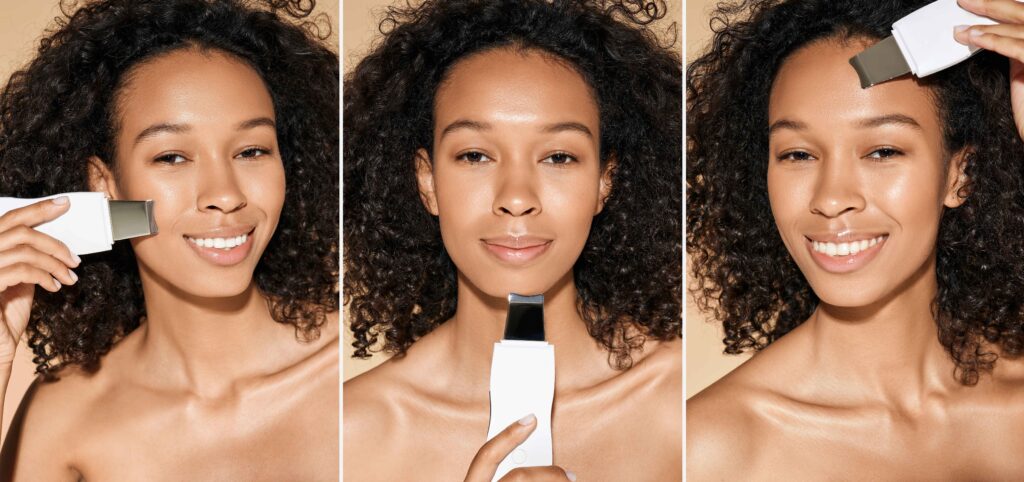Unveiling the Art of Radiance: The Comprehensive Guide to Facial Exfoliation

Introduction
In the realm of skincare, achieving a radiant complexion often involves the delicate balance of cleansing, moisturizing, and a crucial step – exfoliation. The process of gently removing dead skin cells to reveal a fresh and luminous face is a cornerstone of effective skincare routines.
This guide will navigate you through the intricacies of facial exfoliation, exploring its benefits and different methods, choosing the right products, and offering tips for incorporating this transformative practice into your skincare regimen
Understanding Facial Exfoliation
Facial exfoliation is the process of sloughing off dead skin cells from the surface of the face. As skin naturally regenerates, old cells accumulate, leading to a dull complexion, clogged pores, and an uneven skin tone. Exfoliation works to unveil the healthier, younger skin underneath, promoting a brighter and smoother appearance.
The Benefits of Facial Exfoliation
- Revealing Fresh Skin: The primary goal of exfoliation is to uncover the fresh, new skin cells beneath the surface, providing a revitalized and youthful look.
- Unclogging Pores: Regular exfoliation helps to remove debris and unclog pores, reducing the risk of acne breakouts and blackheads.
- Improving Skin Texture: By eliminating dead skin cells, exfoliation contributes to a smoother and softer skin texture.
- Enhancing Absorption: Exfoliated skin is more receptive to skincare products, allowing moisturizers, serums, and treatments to penetrate deeper for optimal effectiveness.
- Brightening Complexion: The removal of dull, dead skin cells results in a brighter and more radiant complexion.
- Stimulating Collagen Production: Certain exfoliating ingredients can stimulate collagen synthesis, promoting firmness and elasticity.
Methods of Facial Exfoliation
- How It Works: Physical exfoliants contain abrasive particles that manually scrub away dead skin cells.
- Common Ingredients: Crushed seeds, sugar, microbeads, or particles such as oatmeal.
- Suitable for: Most skin types, but caution is needed to avoid over-exfoliation or irritation.
- How It Works: Chemical exfoliants use acids or enzymes to dissolve dead skin cells.
- Common Ingredients: Alpha-hydroxy acids (AHAs) like glycolic acid, beta-hydroxy acids (BHAs) like salicylic acid, or enzymes like papain.
- Suitable for: Various skin types, including sensitive skin, as they can be gentler than physical exfoliants.
- Sensitive Skin
- Recommendation: Enzymatic exfoliants or mild chemical exfoliants with ingredients like lactic acid.
- Avoid: Harsh physical exfoliants that may cause irritation.
- Oily or Acne-Prone Skin
- Recommendation: Chemical exfoliants with salicylic acid (BHA) for deep pore cleansing.
- Avoid: Heavy, oil-based exfoliants that may exacerbate oiliness.
- Dry or Mature Skin
- Recommendation: Moisturizing exfoliants with ingredients like hyaluronic acid or glycerin.
- Avoid: Overly abrasive physical exfoliants that may strip the skin of essential moisture.
- Combination Skin
- Recommendation: Balanced exfoliants that address both oily and dry areas.
- Avoid: Products that are excessively drying or overly hydrating.
- Frequency
- General Rule: 1-3 times per week, depending on your skin type and the exfoliator’s strength.
- Adjust: Monitor your skin’s response and adjust the frequency accordingly.
- Time of Day
- Recommendation: Evening is often preferred to allow the skin to rejuvenate overnight.
- Patch Test
- Step: Before using a new exfoliator, perform a patch test to check for any adverse reactions.
- Sun Protection
- Essential: Always apply sunscreen, especially after exfoliation, as the process can increase skin sensitivity to UV rays.
